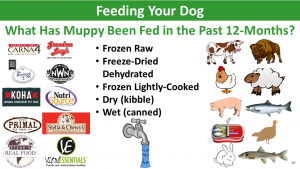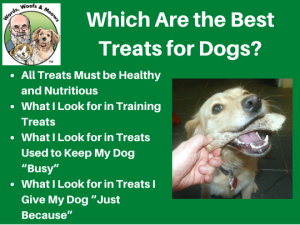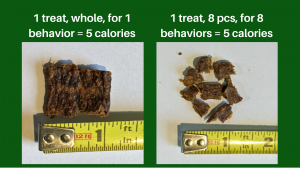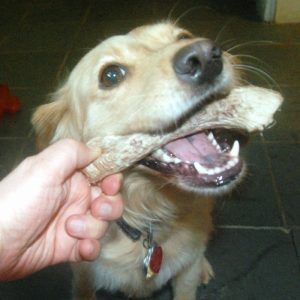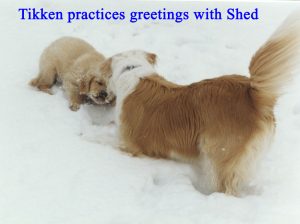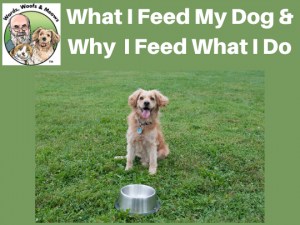 < A version of this article was published in the August 2020 issue of Downeast Dog News>
< A version of this article was published in the August 2020 issue of Downeast Dog News>
< Updated 11DEC20 >
< A short link for this page – https://bit.ly/WhatIFeedAndWhy >
At least once a week, someone asks me, “Don, what food do you feed your dog?” Based on experience, they expect me to say, “I feed my dog brand X because it is the best food for all dogs!” Sadly, that is the response they hear far too often from other pet care professionals.
I tell them, “I feed Muppy a variety of different types and brands of foods. Every  time I purchase food, I switch the primary protein source. I also mix additional water in with whatever food I am feeding. I do not believe that there is a single brand of food or formula that is or ever will be the “best” for all dogs.”
time I purchase food, I switch the primary protein source. I also mix additional water in with whatever food I am feeding. I do not believe that there is a single brand of food or formula that is or ever will be the “best” for all dogs.”
When I got my first puppy, Trivia, in 1975, I was a teenager. I knew nothing about dogs except that I liked them. I fed her dry food based on the recommendation of her veterinarian. When my wife and could afford our first home in the early ’80s, we continued to feed our dogs kibble.
In 1991 Paula was a vet tech, and we had just purchased our second home and a Cairn Terrier puppy we named Gus. Paula’s boss taught us that not all kibbles were the same, so we started Gus on a premium kibble. However, Gus soon developed health problems that led to his becoming the catalyst for our continuing education on pet nutrition. [ FMI – http://bit.ly/Gus-Nutrition ].
We learned dry food or kibble was developed during World War 2 when steel for cans and meat for dog food was in short supply. Today kibble is the type of food most commonly fed to dogs. Dog food companies promote kibble as if it is the best source of nutrition for a dog. However, nothing could be further from the truth. Kibble exists because it is cheap to manufacture, convenient to feed, has a long shelf-life and is less expensive for the consumer than higher-quality foods. Kibble meets the minimal nutritional requirements so that your dog will survive. It does not provide optimal nutrition that can help your dog thrive.
In 1998 we learned about the benefits of raw diets. We traveled to San Diego to attend a seminar with Dr. Ian Billinghurst, a veterinarian advocating for the BARF (Biologically Appropriate Raw Food) diet for pets. Based on what we learned from Dr. Wysong and Dr. Billinghurst, both veterinarians, we started to explore feeding fresh, whole food to our dogs.
In 2002, we started selling commercially prepared, frozen, raw food in the store. At the time, we had five dogs, so economics dictated that we fed a raw meal once a day and kibble once a day. When we were down to two dogs, we switched to feeding 100% raw. Since then, other options such as freeze-dried, and lightly- cooked diets, have also become available, and they are vastly superior to kibble. While we still sell mostly kibble, we also sell nine different food brands in the non-kibble category.
Just like you, my budget plays a role in what I choose to feed my pets. That’s why we fed a mixture of fresh food and kibble when we had five dogs. We knew that feeding a raw diet only a few times a week would be beneficial. One of the reasons we choose to limit our home to one small dog is so that we can afford to feed her the best.
I believe the best diet for a dog is composed of muscle meat, organ meat, and bone. The food should contain little or no soluble carbohydrates. Such a diet represents what a dog is designed to eat. Even the best kibble contains carbohydrates, and some formulas are over 50% carbs.
As much as possible, ingredients should be human-grade, but that is rare in kibble. When you see chicken on the ingredient list of a bag of dry dog food, you may envision a whole roast chicken, but what is probably in the food is a chicken frame. A chicken frame is the bones and cartilage of a chicken, containing the meat that was not removed for use in human products. Chicken frames are also often used in frozen raw diets. There is nothing inherently wrong with a chicken frame, but it is not what most consumers think is in their pet’s food when they see the word “chicken” on the label.
When Muppy joined us in 2013, we started feeding her various types and brands of food. Today, one meal every day is raw or lightly-cooked food. Her second meal may be the same type of food but is a different brand and protein. It may also be a freeze-dried or canned food, or even a very high quality, low carbohydrate kibble.
In the past 12-months, Muppy has eaten ten different brands of food composed of ten protein sources (beef, bison, chicken, lamb, pork, rabbit, salmon, sardines, turkey, and whitefish). To learn more about why I believe dietary rotation is so important, go to http://bit.ly/DietRotation1-30JUL19.
You will note that the above image includes a water faucet. That is because I always add water to Muppy’s food. If she were surviving on her own, she would be looking for living food sources, like mice and other rodents, that are mostly water. If kibble, freeze-dried, or dehydrated food were are fed without adding water, they could be dehydrating.
So that is how I answer the question, “Don, what food do you feed your dog?” What I recommend for your dog will depend on their nutritional needs, your concerns, and your budget.
FMI – On a recent Woof Meow Show podcast, Kate and I talk about what we feed our pets with animal nutritionist and author Linda Case. – https://bit.ly/WfMw-WhatWeFeed-11JUL20
Recommended Resources
Articles on Don’s Blog
( http://www.words-woofs-meows.com )
Things I Wish I Had Known… The Importance of What I Feed My Pets – – WWM-MAR2019 – http://bit.ly/Things-Nutrition-1
Pet Nutrition: Some Myths and Facts – Part 1 – My story with Gus – Maine Dog Magazine – Winter 2017 – http://bit.ly/Gus-Nutrition
Pet Nutrition – What Should I Feed My Pet? – http://bit.ly/What-Should-I-Feed-My-Pet
Pet Nutrition – What Do You Feed Your Dog? – WWM-JUN2016 – http://bit.ly/WhatDoYouFeedYourDog
Pet Nutrition – Should I Feed My Pet A Raw Diet? – http://bit.ly/ShouldIFeedMyPetARawDiet
Pet Nutrition – The Science and Dogma of Pet Nutrition with Dr. Richard Patton with link to 1 hour video – http://bit.ly/Video-Dr-Richard-Patton
Pet Nutrition – Why Rotating Diets Makes Sense – http://bit.ly/DietRotation
Pet Nutrition – The Wisdom of Rotating Your Pets Diet – Part 1 – http://bit.ly/DietRotation1-30JUL19
Pet Nutrition – The Wisdom of Rotating Your Pets Diet – Part 2 – http://bit.ly/DietRotation2
 Podcasts from The Woof Meow Show
Podcasts from The Woof Meow Show
( http://woofmeowshow.libsyn.com/ )
Podcast – What We Feed Our Pets and Why, with – Don Hanson, Kate Dutra, and Linda Case – https://bit.ly/WfMw-WhatWeFeed-11JUL20
Podcast – Pet Nutrition with Dr. Richard Patton – http://bit.ly/DrPatton-Podcast
Podcast – Pet Fooled – A Look Inside A Questionable Industry with Kohl Harrington – http://bit.ly/WfMw-Pet-Fooled
Green Acres Pet Nutrition Resources Page
( http://bit.ly/GAKS_Nut_Home )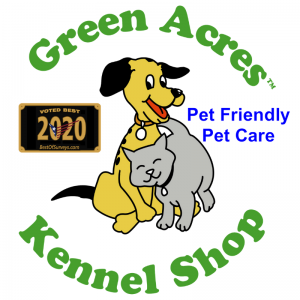
GAKS Philosophy on Pet Nutrition – http://bit.ly/GAKS_Nut_Phil
Pet Foods We Offer At Green Acres Kennel Shop – http://bit.ly/GAKS_PetFood_Brands
Pet Nutrition – Which Companies Are Behind Your Pet’s Food? – http://bit.ly/PetFoodComp
________________________________________________________________________
Don Hanson is the co-owner of the Green Acres Kennel Shop ( greenacreskennel.com ) in Bangor, ME where he has been helping people with their pets since 1995. He is a Bach Foundation Registered Animal Practitioner (BFRAP), Certified Dog Behavior Consultant (CDBC), Associate Certified Cat Behavior Consultant (ACCBC) and a Certified Professional Dog Trainer (CPDT-KA). Don is a member of the Pet Professional Guild (PPG) and is committed to PPG’s Guiding Principles and the Pain-Free, Force-Free, and Fear-Free training, management, and care of all pets. Don produces and co-hosts a weekly radio show and podcast, The Woof Meow Show, that airs on Z62 Retro Radio WZON (AM620) and WKIT 103.3-HD3 and is streamed at http://bit.ly/AM620-WZON every Saturday at 9 AM. Podcasts of the show are available at http://bit.ly/WfMwPodcasts/, the Apple Podcast app, and at Don’s blog: www.words-woofs-meows.com. The opinions in this post are those of Don Hanson.
©11DEC20, Donald J. Hanson, All Rights Reserved
< Click for Copyright and Use Policy >
